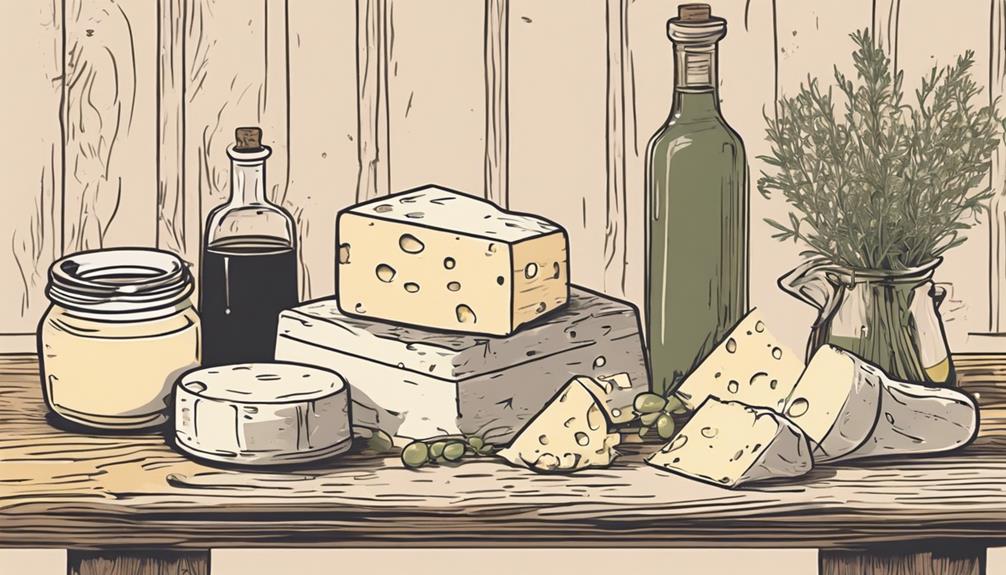See All: Cheese Making
Watch How To Do This Here…
YES! You can make cheese at home. Take our FREE 4-Part video training series to simplify cheesemaking for everyone. No waste. No overwhelm. No missing steps. You can make delicious, healthy cheese, even if you only have access to grocery store milk and regular kitchen equipment…
Click Here To Watch Step By Step Now
“I’ve been making cheese for a few years now, but recently I’ve noticed that my aged cheeses are developing unsightly cracks. I’ve tried a few things to prevent this, but nothing seems to work. It’s becoming really frustrating, especially when I know how important presentation is for selling my cheeses at local markets. What causes cracking in aged cheeses, and how can I prevent it?” Thanks, Rebecca, Portland, USA.
How Do You Prevent Cracking In Aged Cheeses?
Rebecca, cracking in aged cheeses can be a real challenge, especially when you’re trying to produce a beautiful, sellable product. There are several factors that can contribute to this issue, and thankfully, there are ways to prevent it. Let’s dig into some of the common causes and solutions to help you keep your cheeses smooth and crack-free.
Understanding the Causes of Cracking
Cracking in aged cheeses is often due to several factors, including moisture loss, temperature fluctuations, improper humidity levels, and inadequate rind formation. Each of these elements plays a crucial role in the aging process and, if not managed correctly, can lead to your cheese developing cracks.
Moisture Loss
One of the primary causes of cracking is excessive moisture loss. During aging, cheese continues to lose moisture, and if the environment is too dry, this process can happen too quickly, leading to cracks.
Preventing Moisture Loss:
- Proper Humidity Control: Maintain a humidity level of around 85-90% in your aging room. This ensures your cheeses lose moisture at a slow, controlled rate.
- Waxing or Bandaging: Applying a wax coating or using cheesecloth bandages can help retain moisture within the cheese, preventing it from drying out too quickly.
- Regular Monitoring: Check your cheeses frequently for signs of excessive moisture loss and adjust your aging environment if necessary.
Temperature Fluctuations
Inconsistent temperatures can cause expansion and contraction within the cheese, leading to cracks. Keeping a stable temperature is vital for a smooth aging process.
Maintaining Stable Temperatures:
- Aging Room Temperature: Keep the temperature in your aging room consistent, ideally between 50-55°F (10-13°C).
- Gradual Adjustments: When adjusting the temperature, do so gradually to avoid shocking the cheese.
Humidity Levels
Humidity is not just about preventing moisture loss; too high or too low humidity can also lead to other issues that contribute to cracking.
Optimal Humidity Management:
- Using a Humidifier: Invest in a good humidifier if you’re aging cheese in a naturally dry environment.
- Damp Cloth or Water Pans: Placing damp cloths or pans of water in your aging space can help boost humidity levels.
- Dehumidifier Use: Conversely, in overly humid conditions, a dehumidifier can help maintain balance.
Rind Formation
A well-formed rind acts as a natural barrier, protecting the interior of the cheese from moisture loss and environmental fluctuations.
Encouraging Proper Rind Formation:
- Adequate Brushing and Turning: Regularly brushing and turning your cheeses encourages even rind development, preventing uneven moisture loss.
- Controlled Airflow: Ensure there is good airflow around your cheese, but not too much, as it can dry out the rind too quickly.
- Natural Coatings: Applying natural coatings like olive oil or lard can help develop a sturdy and protective rind.
Handling and Care
How you handle and care for your cheese throughout the aging process can also impact whether it develops cracks.
Proper Handling Techniques:
- Avoid Excessive Handling: Limit how often you handle your aged cheeses to prevent unnecessary stress on the rind.
- Clean Tools and Hands: Always use clean tools and hands to avoid introducing bacteria that could compromise the rind.
- Regular Inspection: Add cheese inspections to your routine to catch any early signs of cracking or other issues.
External Factors
Sometimes, environmental factors outside your control can contribute to cracking. Being aware of these can help you take proactive measures.
Adapting to Environmental Changes:
- Seasonal Adjustments: Be mindful of seasonal changes that can affect your aging room’s temperature and humidity, and adjust accordingly.
- Backup Plans: Have backup solutions in place, such as portable humidifiers or heaters, to maintain a stable aging environment during unexpected changes.
Common Mistakes and How to Avoid Them
Even seasoned cheese makers can make mistakes. Recognizing common pitfalls can help you avoid them.
Be Mindful of These Errors:
- Overcrowding: Don’t overcrowd your cheese aging space, as this can hinder proper airflow and increase the risk of uneven drying.
- Inconsistent Monitoring: Inconsistent checks on your cheese can allow small issues to develop into larger problems, including cracks.
- Improper Cleaning: Failing to keep your aging environment clean can lead to bacterial issues that weaken the rind structure.
Final Thoughts…
Rebecca, cracking in aged cheeses can certainly be frustrating, but with careful control of moisture, temperature, and humidity, along with proper handling techniques, you can significantly reduce the likelihood of it happening. Consistency is key, and paying attention to your cheeses’ environment will go a long way in ensuring their quality. Thanks for reaching out with your question, and happy cheese making!
Return To: Cheese Making
Free Step By Step Cheese Making Videos…
YES! You can make cheese at home. Take our FREE 4-Part video training series to simplify cheesemaking for everyone. No waste. No overwhelm. No missing steps. You can make delicious, healthy cheese, even if you only have access to grocery store milk and regular kitchen equipment…

